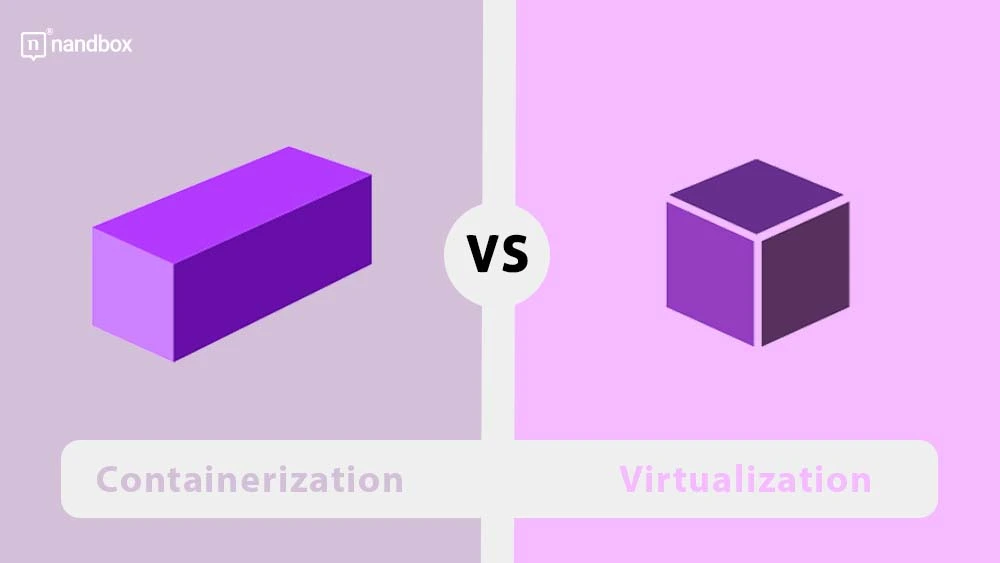Containerization vs. Virtualization 101
Containerization vs. virtualization. It’s a debate that has been raging in the world of computing and the tech industry for years, and it looks like it’s not going to end anytime soon. If you’ve found yourself wondering which is best for you in the middle of this debate and don’t know what to make of these two concepts, don’t worry—you’re not alone! In this article, we’ll help you understand containerization and virtualization. We’ll get to explore the similarities and differences between each, as well as the pros and cons of each approach. By the end of this article, you will have enough knowledge to know which is better for your business and application.
What is Virtualization
In the virtualization vs. containerization comparison, let’s start with virtualization. And yes, your interpretation of the word “virtualization” is correct. Instead of businesses relying on actual hardware and services that can get breached or damaged at any time, putting your business or application at high risk. Virtualization comes to save the day. Virtualization is the process of dividing a physical server into multiple virtual servers that you create, which are called “virtual machines.” So this way, any business or application would require only one piece of physical hardware to run multiple systems at once. The virtualization approach simulates all the features and capabilities of the physical hardware that you would need for all your operations. This lets users run more than one operating system and operation at the same time. It’s a great way of efficiently maximizing resources and making the most out of them.
Virtualization comes in many types, such as:
- Storage virtualization: It is the process of creating a virtual storage unit for any business by combining all the physical ones. This allows businesses to run operations and store data more efficiently and securely.
- Application virtualization: It is the process of duplicating an application to make it a virtual one. The virtual application can then run on any operating system other than the one it was developed for.
Pros and Cons of Virtualization
Virtualization, like any other approach, is not widely agreed upon. So, let’s get down to the details: what are the pros and cons of virtualization?
Pros of Virtualization
The main benefit of virtualization is that it is very efficient. As it allows developers to run not only one but multiple operating systems at once. This can help to streamline and improve productivity, as well as the speed of operations. Another benefit that eliminates a major concern for developers is security. Virtualization is more immune to any risks and sudden disasters that might face any business or application, such as malicious attacks. In contrast to the long process of recovering any damages that may happen due to these risks on physical servers, the process in the virtualization approach takes less time and effort. This helps maintain and improve the continuity of all business operations.
Cons of Virtualization
The downside to virtualization is that it can be costly to set up and maintain. The process of virtualization usually requires a lot of hardware, software, and experienced staff. This would be very money- and resource-consuming, especially if the business looking to take this approach is still a small business with a tight budget. Keep in mind that shifting all your business operations into virtual machines and hypervisors takes a lot of time and preparation. This can slow down operations rather than speed them up.
What is Containerization
Again, containerization is literally not wordplay; it is what exactly this approach means. Containerization is an approach that enables you to create a specific and isolated environment for your application and easily use it on any machine running the same operating system. To put it in a more simple way, by using containerization, you gather up all the contents of your software, from code, functions, and everything, and you pack it into this little container. Which is secure, lightweight, and can move anywhere without trouble. Containerization or containing applications is now one of the most common approaches that developers use to create native applications. It has proven to be more efficient and effective. As these containers can be installed and configured in no time on any new environment or operating system.
Pros and Cons of Containerization
Pros of Containerization
If there is anything special about the containerization approach, it is its flexibility. Since the entirety of your application is stored in containers. They may be moved swiftly and conveniently to any machine. Also, the containerization approach is cost-, resource-, and time-efficient. Container applications, in contrast to virtualization, are simple to build and assemble. It doesn’t take a great team to do this, as there are many tools on the market to achieve containerization. This greatly helps in improving productivity and the performance of business operations.
Cons of Containerization
Looking at the empty half of the glass, containerization also has its downfalls. As much as the flexibility and lightweight nature of container applications can be beneficial, they can also be risky. The security boundaries and measures found on container apps can be a bit vulnerable. This makes them more prone to attacks and breaches, which puts the whole business at risk.
The fact that containerization allows running on only one operating system, unlike virtualization. Which allows running on multiple operating systems at the same time, also counts against this method. To run on multiple OSes in containerization, you’d need to develop a separate one for each, which can take much time and effort.
Containerization vs. Virtualization: The Right Choice for Your Application
Now it’s time to figure out the right choice for you, and the question you need to ask yourself is this: What kind of application do you have?
If you have an application that is easy, not complex, and relatively straightforward, containerization is likely the way to go. Containers enable better scalability, which is ideal if you are looking to expand in terms of users in the future. Plus, they are more efficient with resources and provide superior performance. Since there is no virtual machine or operating system involved in running the application. On the other hand, if you have an application that requires a lot of resources or processes large amounts of data quickly, virtualization may be the better choice for you. Virtual machines can handle more complex applications easily and efficiently and offer better security options than containers. In conclusion, it just comes down to what type of application you have and what environment works best for it. Understanding both containerization and virtualization will help you make an informed decision as to which one will work best for your project’s needs.







